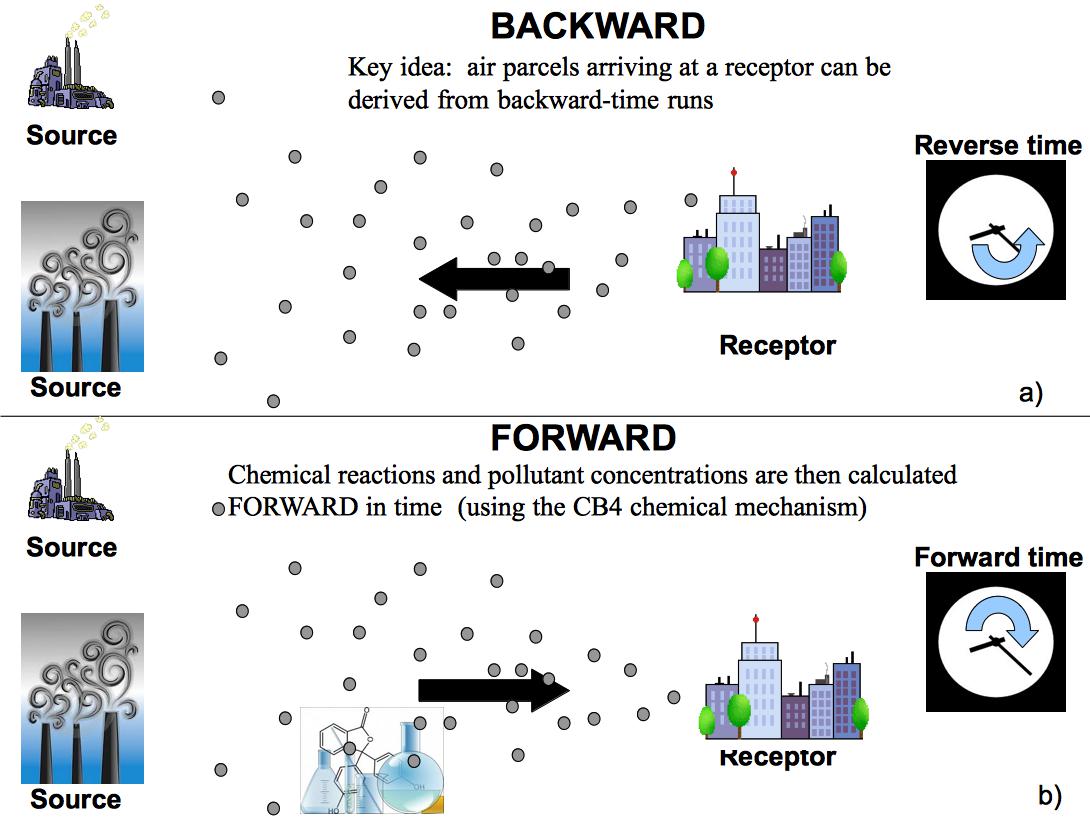Industry and human society in general are producing pollutants that adversely affect air quality and human health. These pollutants are moved around due to winds and mixing in the atmosphere. Some of the pollutants, such as ozone and particulate matter (PM), can also be formed from chemical reactions taking place in the atmosphere.
Thus in order to arrive at a quantitative understanding and prediction of pollutant concentrations, a model of the atmosphere that can account for both atmospheric motions and chemical transformations.
I am interested in the modeling of air quality, in support of policy decisions regarding how air quality can be improved.
Toward this end, my group has developed an unique model (“STILT-Chem”) in its time-reversed nature for atmospheric transport and adoption of the stochastic Lagrangian atmospheric modeling method (see figure below).

STILT-Chem has been applied to quantify the transport of ozone across the U.S.-Canadian border [Wen et al., 2012]. More recently, the model was enhanced to understand the emissions and transformation of ammonia to form ammonium particulates, a key component in PM [Wen et al., 2013].



